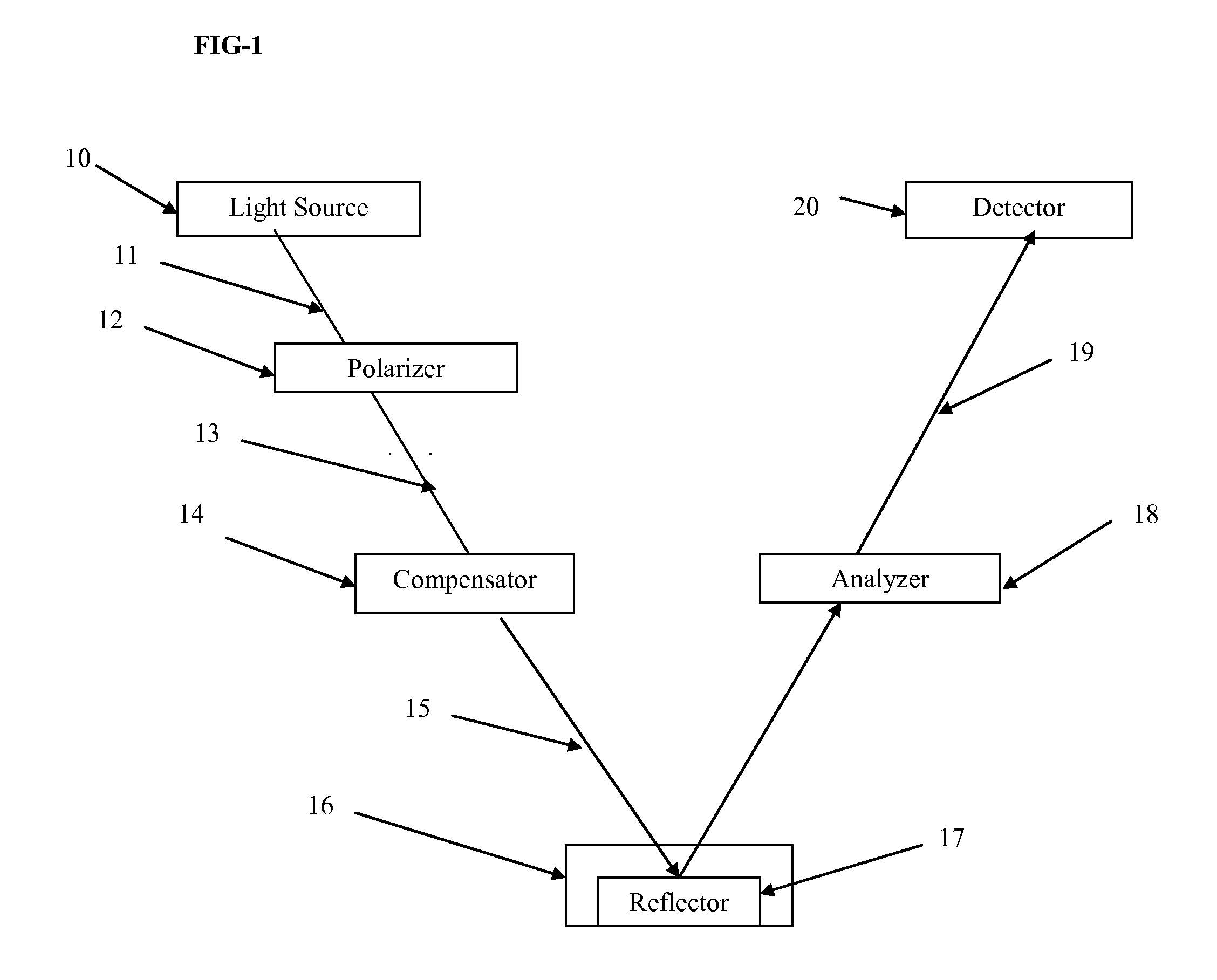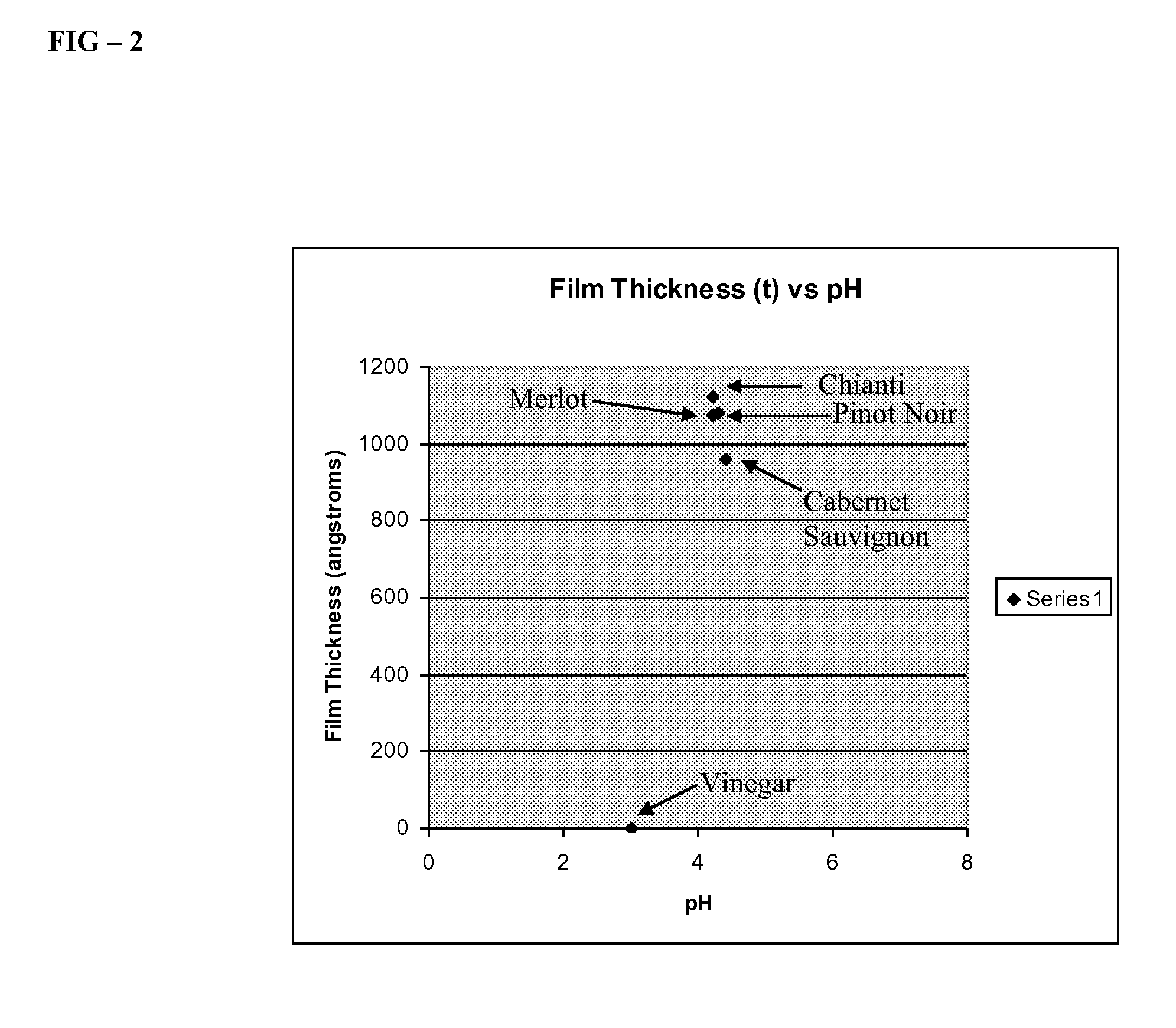Method Using Laser Ellipsometry for Determining the Quality of Liquid Product Containing Polyphenols
a technology of laser ellipsometry and liquid product, which is applied in the direction of optical radiation measurement, instruments, polarisation-affecting properties, etc., can solve the problems of difficult chemical characterization of effects, limited use of photometers, and limited application of sensors
- Summary
- Abstract
- Description
- Claims
- Application Information
AI Technical Summary
Benefits of technology
Problems solved by technology
Method used
Image
Examples
Embodiment Construction
[0017]There has been no attempt (to the inventor's knowledge) to use laser ellipsometery to determine the quality of liquids containing polyphenols. The present invention uses laser ellipsometry to measure the amount of polyphenol (tannin) adsorption on to the horizontal surface of the liquid's container by determining the thickness of the polyphenol film from adsorption at a solid surface. Ellipsometry is an analytical method that is well known for examining the adsorption of extremely thin films on surfaces. The method is based on an analysis of the way in which the thin film affects the polarization of a light beam. Laser ellipsometry is a sensitive method for determining optical properties of surfaces and thin films on surfaces. Linearly polarized light reflected by a thin film on a substrate is transformed into elliptically polarized beam of light with properties that are determined by the film thickness, film index of refraction, the light beam's wavelength and the angle of in...
PUM
| Property | Measurement | Unit |
|---|---|---|
| angle | aaaaa | aaaaa |
| thickness | aaaaa | aaaaa |
| fixed angle | aaaaa | aaaaa |
Abstract
Description
Claims
Application Information
 Login to View More
Login to View More - R&D
- Intellectual Property
- Life Sciences
- Materials
- Tech Scout
- Unparalleled Data Quality
- Higher Quality Content
- 60% Fewer Hallucinations
Browse by: Latest US Patents, China's latest patents, Technical Efficacy Thesaurus, Application Domain, Technology Topic, Popular Technical Reports.
© 2025 PatSnap. All rights reserved.Legal|Privacy policy|Modern Slavery Act Transparency Statement|Sitemap|About US| Contact US: help@patsnap.com



